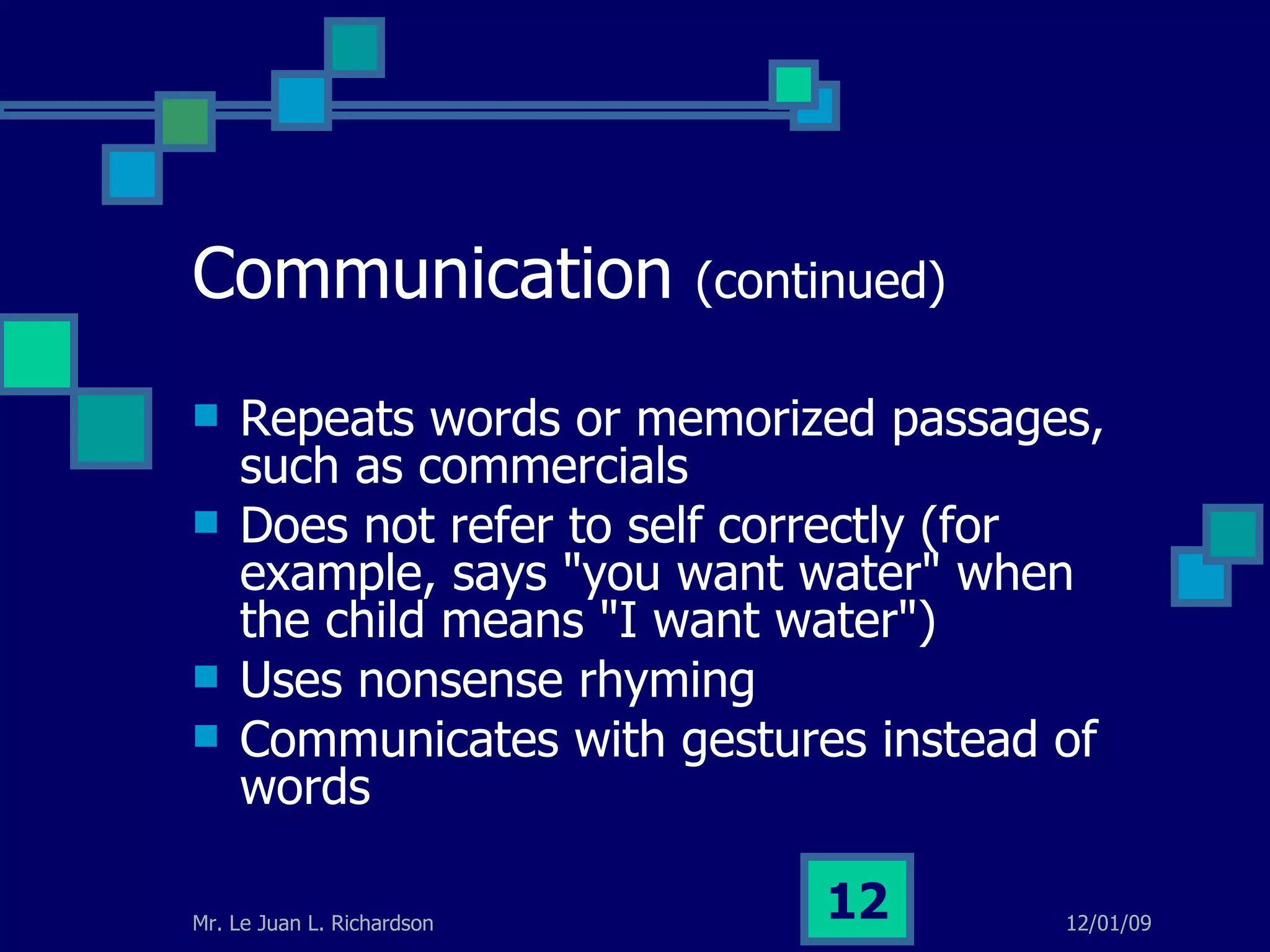Autism spectrum disorder is a neurological condition that affects communication skills and one or more senses. There are five main types of autism: autistic disorder, childhood disintegrative disorder, Rhett's disorder, Asperger's syndrome, and pervasive developmental disorder. Children with autism often have issues with social interaction, communication, behaviors, and sensory processing. While the cause is unknown, autism is diagnosed more frequently today than in the past and managing it can impact family life.
































